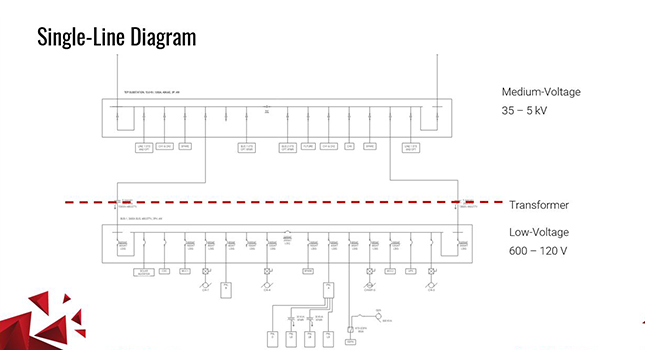During this critical power webcast, several questions were left open. Review the responses here

Electrical system insights
- Electrical engineers should understand how to specify both low- and medium-voltage systems.
- NFPA 70: National Electrical Code provides standards and guidance on how to specify and design these systems.
There are several reasons to choose one voltage level over another for electrical transmission. Once the requirements for electrical transmission have been determined, the electrical engineer must design a system that is both safe and effective for the commercial building.
First, the requirements of the electrical system must be defined. Voltage is determined by the equipment requiring power. Another reason is the cost. This webcast on Dec. 8, 2022, left several questions open.
Laura Cowley, PE, LEED AP BD+C, Vice President, B&H Engineers Inc., Dallas, answers questions about the application and design requirements for low- and medium-voltage electrical systems.
Which are the applications where we can consider close transitions?
Facilities with sensitive load equipment or data centers where any loss of power could cause significant loss in profitability.
What approvals do we need from utility to make this transition possible?
Discussions with utility about standby charges, grid interconnects, length of dual connection, frequency differential, phase angle differential and any additional requirements the utility requires.
On your transformer slide, the first bullet point said, “the size of a transformer is based on the calculated demand load.” Can you provide some code section to back up this statement?
If the owner’s electrical contractor is furnishing and installing the medium voltage transformer, the rules for sizing the transformer is the same as sizing low-voltage transformers and is governed by the load calculations in NFPA 70: National Electrical Code 220. Typically, transformers are sized to support the downstream panel load per the NEC 220 calculations at a minimum. While transformers can be overloaded, the life span will decrease. If the utility company is providing the transformer, they are not governed by the NEC.
What are the recommended voltages for low-voltage electrical systems and why?
Based on the U.S. power grid, 120, 208, 240, 277 and 480 volts are electrical system voltages. Other countries have different standard voltages.
Is 208 V recommended for pumps near rivers, lakes, etc.?
Typically pumps greater than ¾ horsepower are 3-phase. Three phase motors have smaller wires and help balance phase loads. Pump sizing should be coordinated with a mechanical engineer and ensuring the physical size of the breaker fits in the overall panel selection.
Define the differences in AIC ratings, WCR and how to specify.
AIC (amps interrupting capacity): The value of amps that a circuit breaker will open.
WCR (withstand closing rating): The automatic transfer switch will withstand and close onto the fault until a protective device opens.
What standard we should be follow for voltage less than 48 Vdc?
NEC has several sections related to <120 V including Chapter 8, 720, 725 and 645 to name a few. ANSI/TIA/EIA has several sections like 568, 569, 607 and 1005. IEEE 802 includes power over ethernet and wireless information.
Table 110.26(A)(1) only is for the low voltages. What is used to determine the working clearances for the medium voltages and higher?
Table 110.31 or 110.34(A)

Aren’t emergency power systems for life safety systems only? And standby generators are for backup power for nonsafety loads?
Standby generators can be used for life safety applications such as health care.
110.26 (A) 1 calls out working clearances for system voltages to ground. Aren’t most medium-voltage systems delta configured?
Most building medium-voltage transformer have wye on the load side.




